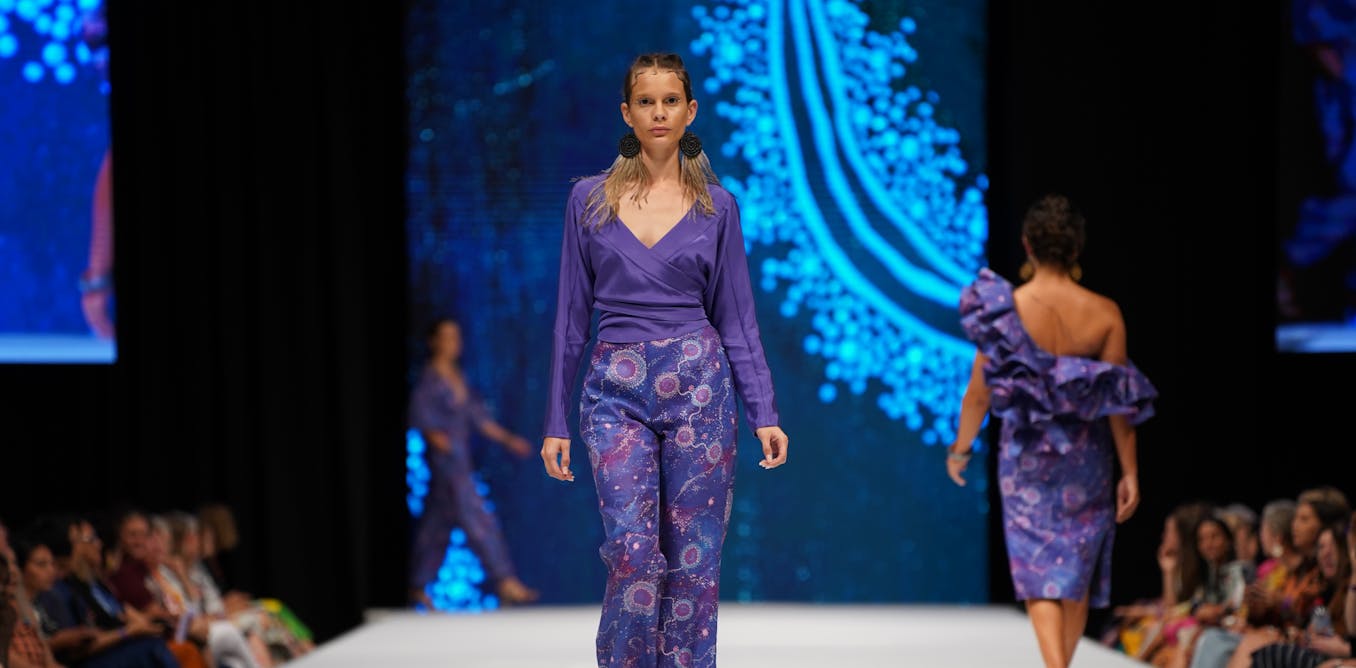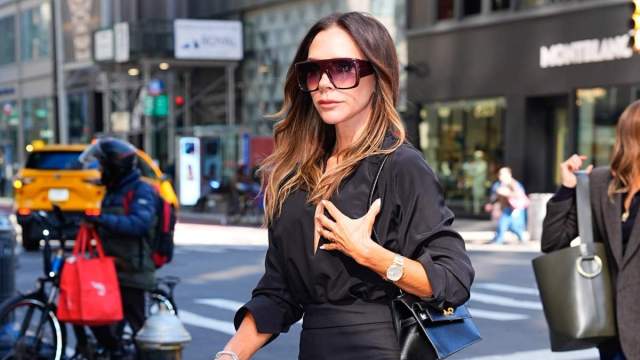If you’re not First Nations yourself, you may have found yourself asking if it is okay for you to wear First Nations fashion.
What can you buy? How do First Nations people feel about ally wear?
To help answer this, I spoke with 20 First Nations Knowledge Holders from Tarntanya/Adelaide, Naarm/Melbourne and Warrane/Sydney to hear their perspectives on ally wear, respect and responsibility.
Overall, Knowledge Holders said it’s tricky. Wearing clothes by a First Nations designer or brand as an ally can be a good way to show support if you’re being respectful and genuine. But it can also feel empty or even hurtful if it’s just for show.
When ally wear is welcomed
For several of the Knowledge Holders I spoke with, seeing non-Indigenous people wear these clothes is positive. It shows solidarity, supports First Nations businesses and celebrates culture.
Brands like Clothing The Gaps were often named as good examples of ally-friendly labels that clearly mark which designs are for everyone and which are mob-only.
As one Knowledge Holder put it:
If a First Nations person has created these forms of fashion and has not declared that it’s exclusive to First Nations people, then I think that it’s fine for allies to wear it.
Many of these Knowledge Holders agreed wearing the Aboriginal flag or supportive slogans is generally seen in a good light, as long as it’s respectful and informed.
Allyship is encouraged and even needed for broader change. Wearing supportive clothing can help build momentum for First Nations causes. One Knowledge Holder noted it’s important to encourage allies to visibly show their values.
Another reflected:
I don’t think wearing the flag and showing support in that way is wrong […] Especially I feel like since the No referendum, it’s comforting to see where your allies are.
But there are concerns
Not all Knowledge Holders viewed ally wear positively.
For some, ally wear felt hollow without real support for First Nations rights, self-determination and sovereignty.
They expressed cynicism about non-Indigenous Australians embracing First Nations fashion while denying political rights.
One Knowledge Holder told me:
part of me is like you couldn’t give us a Referendum, but you’ll use our place names […] you want to use our fashion.
There was also frustration with forced displays of support, such as mandatory guernseys for sports teams, as seen during the AFL’s Sir Doug Nicholls Indigenous Round.
One Knowledge Holder said:
You know, half of them probably don’t even love black fellas but they’ve got to wear it otherwise they’re not playing.
A Knowledge Holder also described “blakwashing” as a surface-level show of solidarity used to improve an organisation’s image without meaningful change:
It’s only negative when they’re just wearing it, say – I don’t know, a security company decide to wear Indigenous clothing – to say that they support Indigenous, then they do the opposite.
A balancing act
Many of the Knowledge Holders described the question of allies wearing First Nations fashion as complex, not something with a simple “yes” or “no” answer.
They expressed indifference toward non-Indigenous people wearing Aboriginal flags or First Nations designs, seeing it as generally harmless and better than overt racism.
They found that, while overuse or constant displays might feel strange, they didn’t see it as threatening or offensive.
Knowledge Holders described a balancing act that depends on context, intention and the wearer’s level of knowledge and respect.
Some were clear they liked seeing allies wear First Nations clothing, but only if “they’re not over the top with it and not using it as a way to keep oppressing us”.
As another Knowledge Holder explained:
I think it’s a matter of being self-reflective about what you’re doing and why you’re doing it.
Knowledge Holders consistently emphasised that allies should approach this with genuine respect and good intentions. Some suggested buying designs from the Traditional Owners of the Country you’re on and learning the story behind what you wear.
Being a true ally
As an ally, wearing First Nations fashion depends on context: your intention, your respect, your understanding and where you’re getting your garments from.
If you are an ally, and would like to wear First Nations fashion, here are some things to keep in mind:
Ultimately, being an ally means more than making a purchase. It’s about showing respect, standing in solidarity and enacting support.


